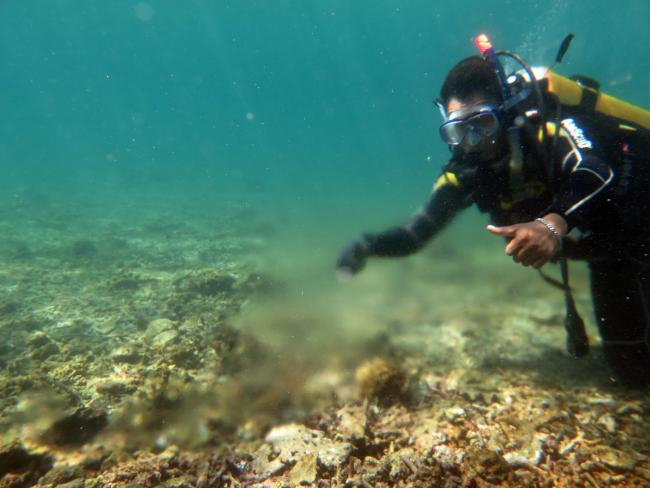Research group
Coastal ecosystems are sensitive to nutrient availability. Eutrophication can severely inhibit their functionality. Although often rivers are the main nutrient source to coastal ecosystems, in individual locations submarine groundwater discharge (SGD) can dominate the nutrient inputs. While SGD is composed of terrestrial meteoric freshwater, plus recirculated seawater and connate water, we particularly focus the terrestrial meteoric freshwater component.
Methods
The methods of measuring SGD discharge are increasingly standardized. At varying scales and conditions, satellite and aerial infrared photography, isotopes of radon and other elements, as well as direct physical measurements with automated and manual seepage meters are employed. The individual methods are complicated to compare, as they focus different types of SGD and work at different scales. While e.g. radon measurements integrate SGD over a large area, seepage meters measure only the SGD exactly at their application point.
SGD from tropical islands
Globally, terrestrial SGD amounts to up to ten percent of river discharge, and is to a large proportion derived from islands. A combination of high SGD, fast weathering, nutrient-rich rocks, active natural ecosystems under strong anthropogenic pressure, as well as often intensive fertilizer use and high population density, lead to the hypothesis that submarine groundwater discharge is an important nutrient source for marine ecosystems around tropical islands, significant at the global scale. The few existing studies analyzing SGD-associated nutrient fluxes from tropical islands showed them to be regionally significant. Ecological processes in and functioning of tropical shallow coastal ecosystems, e.g. coral reefs or seagrass meadows can be significantly affected by SGD-associated nutrient fluxes. Particularly the increased availability of inorganic nutrients can strongly affect primary production with cascading effects on ecosystem productivity and biogeochemical element cycles along with resulting oxygen availability critical for most benthic and pelagic organisms. Other factors that are affected by SGD include pH value, dissolved and particulate organic matter concentrations, salinity, and temperature.
However, despite the potentially high local but also global relevance of SGD from tropical islands, there is no study that comprehensively assesses its potential to affect ecosystems and highlights regions at a global scale where the effects of SGD should be considered now and in the future. The project intends to understand the global significance of SGD in biogeochemical cycles and enable local countermeasures of undesired SGD effects.





